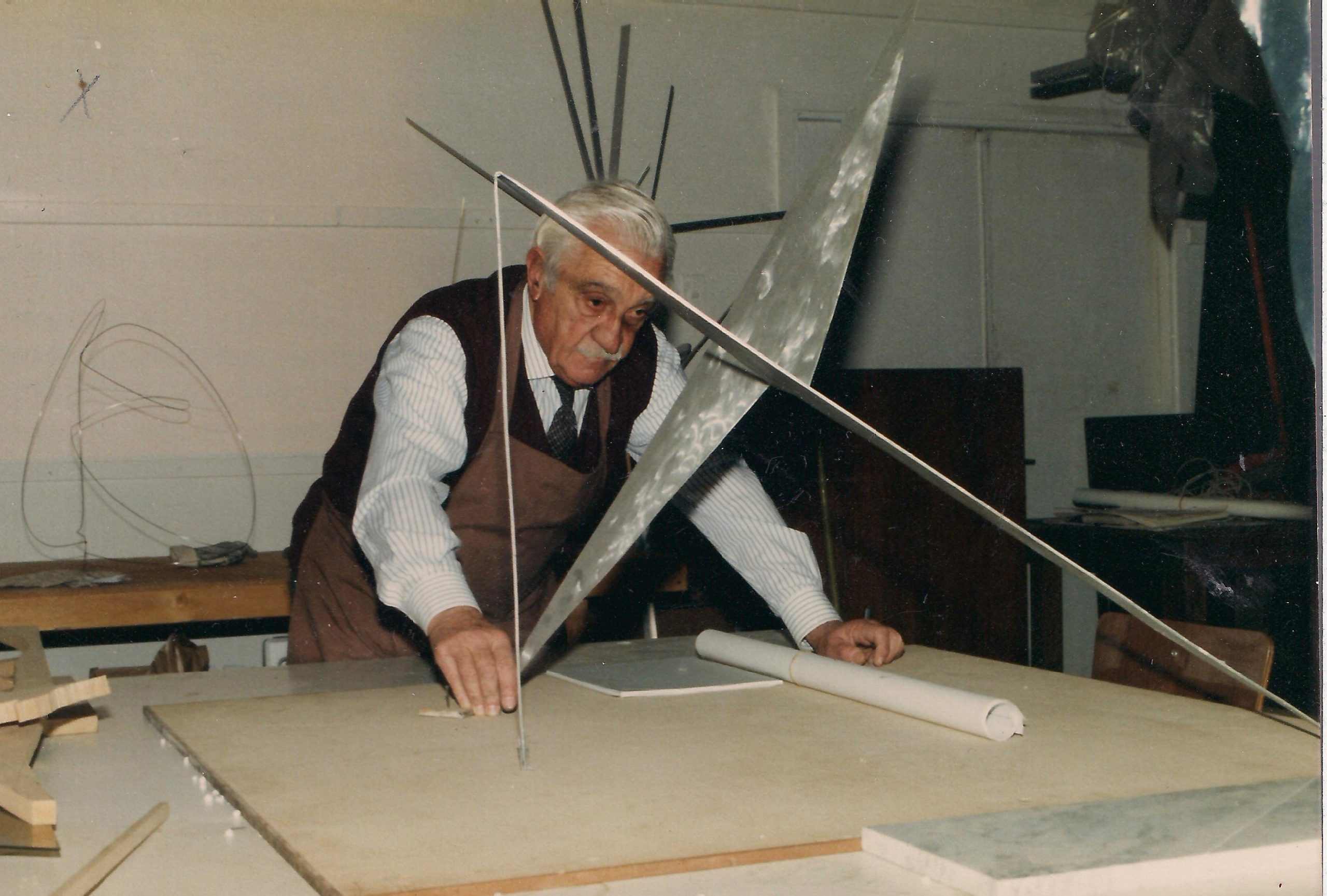He was born in the city of Rosario, Santa Fe, in 1923. While he was still small, his family moved to Buenos Aires.
Together with his brother Enio Iommi, he began his artistic training in his father’s sculpture workshop. Later, he studied drawing with Fornells and, in 1939, he entered the Manuel Belgrano School of Fine Arts. In 1941 he became a disciple of Antonio Sibellino. In 1943 he left the institution after signing the Manifesto of four young people (Girola, Maldonado, Hlito and Brito) against the guidelines of the teaching that was taught there.
His first figurative sculptures soon become planes deployed in space that sometimes present incisions or acquire oblique, horizontal or curved directions.
In Argentina he participates in the Concrete Art-Invention Association and, together with the MAC Group of Milan, he exhibits in the Italian city of Como. During this period he works alternately in Paris and Milan, where he presents an individual exhibition at the Salto Bookstore.
As part of the Group of Modern Artists of Argentina, he exhibited at the Viau Gallery (1952) and at the Krayd Gallery (1953), where he also participated in the exhibition Current Orientations of Sculpture. He lives in Chile, where he presents his works in Viña del Mar and Santiago de Chile and is a professor at the School of Architecture of the Catholic University of Valparaíso.
In 1963 he obtained the Braque Prize, awarded by the French Embassy. In 1968 he participated in the exhibition Beyond Geometry, organized by the Torcuato Di Tella Institute of Buenos Aires and in 1971 he participated in the 11th Antwerp Sculpture Biennial.
He progressively geometrizes the volumes, fractures them and integrates the bases, seeking to turn the mass of the basement into the protagonist of the work. Since 1970 he has worked on several sculptures located in Chilean public spaces, including Dispersa I, Trehuaco (1986) and Monumento a Athenea, Santiago del Chile (1987).
Parallel to his work as a sculptor, he develops important poetic work, collaborating with the Parisian Revue de Poésie. In 1991, the Catholic University of Valparaíso sponsored a retrospective exhibition of his work, held in the Sculpture Park of the Municipality of Providencia.
Three years later he died in the city of Viña del Mar, Republic of Chile, country in which he produced most of his artistic work.


 Girola Claudio
Girola Claudio